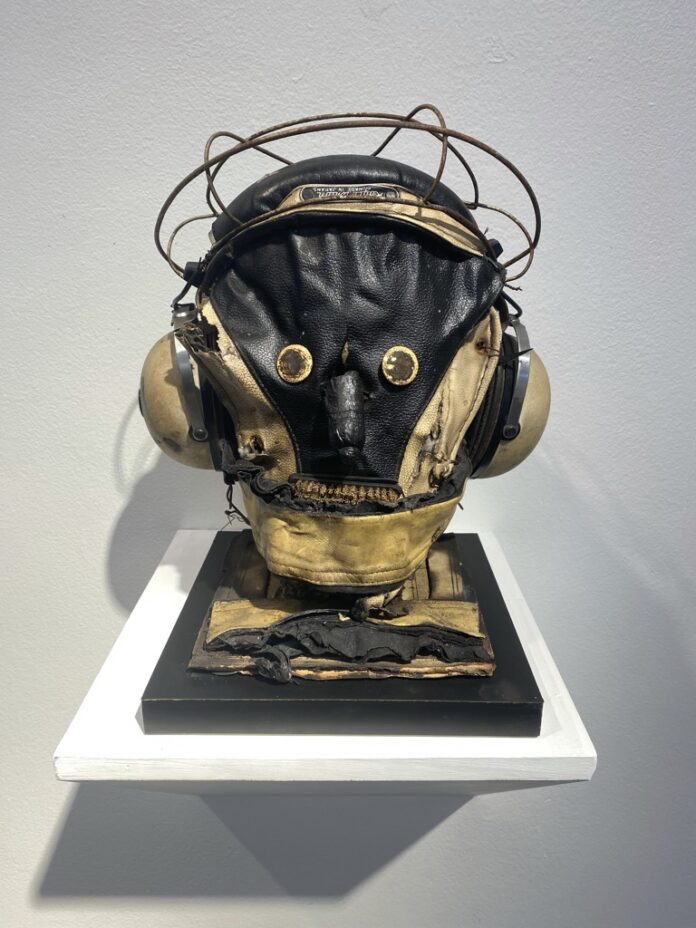In the Baker Center for the Arts (CA) Galleria, there is currently an exhibit displayed entitled “Humanly Possible.” It showcases the work of Ronald Gonzalez, who is a contemporary sculptor, installation and assemblage artist. This art medium deals with the construction of three-dimensional pieces of work that protrude from a solid or defined surface. Gonzalez is known for exploring the intersections between found objects and figuration within his art. His art revolves around connecting worn materials that are representative of personal memories and histories, which he creates hybrid head structures. His work fuses these personal memories with forgotten objects to portray humanness. The series of heads displayed in the exhibit are shown as anonymous but individualized portraits that capture human tragedy and human comedy.
The heads convey a connection between the art and the creator. The discarded materials used for each sculpture represent the idea of connecting life and death, inanimate with animate, and inhuman with what is humanly possible. Director of the Martin Art Gallery Jessica Ambler stated her reasoning for displaying Gonzalez’s work, saying, “Gonzalez reached out to me with an exhibition proposal which was incredibly unique and unlike anything I have staged yet here at Muhlenberg. Since I have focused quite a bit on exhibitions featuring new media– things such as video/motion art, digital composites and 3D fractal images– I felt that it was time to circle back to a more traditional art form.”
The CA Galleria and the Martin Art Gallery have previously showcased different mediums of art that have challenged people’s conventional ideas of artistry and artistic expression. Ambler explains, “When looking at Gonzalez’s work, I was struck by each object’s uniqueness. Each of the heads in the series is composed of entirely different materials such as plastic toys, old hats and musical instruments.”
Anna Hanley ‘25 said, “I love the exhibit, it is so cool. I think it’s interesting how it compels you to look at the art closely to fully see all the details and materials that make up the heads. Because at first glance you’re kind of like, ‘what is this?’ and then when you give it a closer look with more focus you begin to appreciate it in its full form and begin to think about it.”
Ambler spoke to the compelling nature of the sculptures and how they draw observers in by saying, “Close inspection also allows viewers to contemplate the connections between consumerism and waste through the integration of detritus and found objects made useful once again by the artist.”
“These individualized elements infuse each head with a distinct personality and a liveliness all its own,” Ambler continued.
The exhibit is unique from others the Galleria has shown, both in its meaning and its art form. Ambler provides her reasoning for the different display by stating, “Sculptures can often be difficult to display well since many sculptures are large, heavy, and need to be seen from multiple angles to be fully appreciated. Gonzalez built the custom shelves used in the exhibition and the way the heads are laid out on them allows visitors to get up close and inspect each work individually.”
The exhibit is in the Galleria until April, for observers to look around and take in the head sculptures, and appreciate the detail put into each piece. Ambler stated, “Each is approximately life-sized and I think this not only lends the work an air of vitality but it also allows viewers to appreciate art on a human scale.”
Shinam ‘25 is a political science and sociology major at Muhlenberg. She is immensely excited to be apart of the Weekly staff! When she isn’t writing, she can be found reading a book or watching a comfort show with her favorite fast food!























